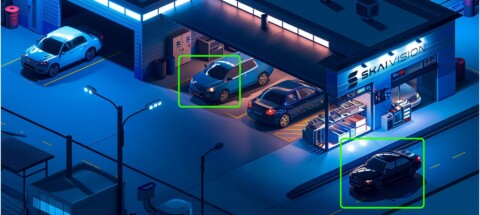One of the most sacred beliefs in the car business is “inspect what you expect”, especially with store processes. But in today’s world, most leaders can’t physically witness as many end-to-end transactions as they would like.
The best managers in the world have one set of eyes, which means they can’t be everywhere, at every moment, monitoring to ensure that critical, revenue-generating activities are being done.
But Artificial Intelligence (AI) can do all of these things. By tapping into an auto dealership’s existing camera system, AI technology can monitor video footage 24/7 and send alerts to managers when certain activities happen—or don’t happen—in the dealership.
Let’s break down the ways Visual AI is a game changer for your dealership.
Critical Activities
Dealerships have processes in place for a reason. When followed correctly, processes are proven to work. Every dealership trains a specific road to the sale, the service write-up and the multi-point inspection. But how simple is it to pull up accurate, objective data on how well the team executes these critical, revenue-generating activities?
Reports can tell you what happened after the fact, but they don’t tell you why. You can check the data in your DMS, CRM and other systems, but data isn’t always accurate.
Video footage doesn’t lie. Visual AI sends alerts with small video clips so managers can view critical activities in real-time. This allows them to quickly spot patterns where breakdowns occur in many activities deemed opportunities:
Customer meet and greet
Vehicle walk-arounds
Presentation of tire options
Vehicle delays in specific areas
Customer delays in specific areas
When the team gets a text with a clip displaying a breakdown in the process, they can immediately step in to correct the flow.
Additionally, Visual AI can send alerts when employees go the extra mile. Did Joey in sales take a turn on ten customers sold this week? He likely understands the theory behind the process and therefore has management potential. Has Mary in Service presented tire options to fifty customers this week? She deserves recognition and a bonus.
Transaction Times
Transaction times at auto dealerships are one of the biggest obstacles to an improved customer experience. According to J.D. Power, consumers spend an average of 3.2 hours onsite to buy a vehicle, and only 53% believe they are greeted quickly in service. Many dealers want to reduce customer time onsite but do not know their current average, much less their biggest bottlenecks.
Express Lanes are designed to compete with shops that offer oil changes in 30 minutes or less. Yet, at many dealerships, this process may average over an hour. Why? What is within your power to improve now?
Visual AI identifies the bottlenecks in every process. Recording the exact time elapsed per transaction and for every transaction phase. Imagine the benefits of knowing in real-time how long it takes for the following processes to occur:
Total time onsite for every sold and unsold opportunity
Time to greet the customer
Test drive completion and duration
Time to present figures following a test drive
Service write-up to tech rack
Tech time at the parts counter
Time onsite for oil changes
Security, Fraud and Theft
When something bad happens, your dealership’s current camera system can tell you what happened, but only after the fact. Visual AI sends real-time alerts as soon as it spots any security threat. Examples include:
Unauthorized access to private rooms or server rooms
Person with firearm
Vehicle exiting the lot with no license plate or dealer tag
Visual AI can also help customers and employees who need help. Recently, customer fell out of his vehicle at a dealership and suffered a heart attack. Nobody noticed for nearly an hour. Visual AI would have sent an immediate alert. Conversely, AI can be used to exonerate dealers when faced with customers who falsely claim they fell and injured themselves on the dealership’s property.
One of the best things about Visual AI? It leverages and helps to monetize an existing data source—your camera system—that currently serves little purpose. AI technology does not require any employee training. Alerts are customizable, allowing dealers to choose as few or as many alerts in different categories as they would like.
Many big box retailers have invested tens of millions of dollars to develop their own visual AI systems. The ROI is clear. AI technology can help auto retailers to manage their employees and processes better while improving the customer experience.

